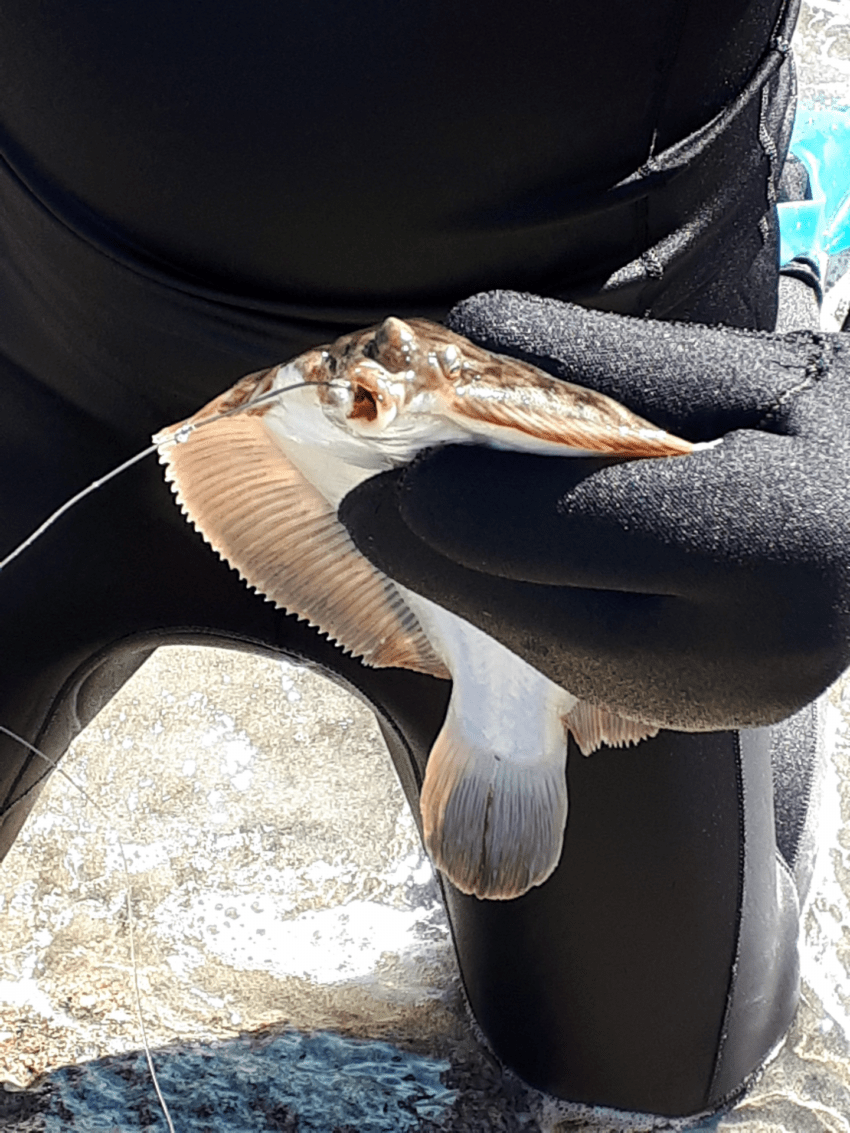Winter flounder otherwise known as black back is one of the best tasting salt water fish to be caught in the waters of the western north Atlantic coast, from Labrador, Canada to Georgia, United States.
So how do you catch winter flounder? A fun way to catch flounder is to fish for them underwater. The advantages of fishing for them this way is you can target the largest ones easily. Since they tend to huddle around rocks and reefs, it can sometimes be a challenge to fish for them effectively from the shore.
Even if you don’t want to snorkel for flounder, this article and video can still help you understand the behavior and habitat of these fish. Understanding their behavior can help you fish for them more effectively whether from the shore or a boat.
If you do decide to try underwater flounder fishing what will you need to get started? You will need to purchase a few items first. The tackle is quite simple, you just need a line and a hook to put some bait on. You can easily pick up some clams at the grocery store and your good to go.
What I use is the spool that line comes on when you purchase it. The spool works great because the founder will be seen at various depths and its quite easy to unravel the spool and drop the weight down to the flounder.
Its important to purchase a spool with a build in notch on it so you can rest the line when swimming or when you have reached the desired depth. The notch prevents the line from continuing to unravel.
Its important to purchase a small hook. The winter flounder unlike summer flounder have a small mouth, so small bait and hook is required. You can easily purchase a flounder rig either online or locally and all you need to do is clip it to the line.
Since this activity is done underwater, you will also need these items:
- mask
- snorkel
- wetsuit (5/4-7/6)
- hood
- gloves
- neoprene socks
- flippers or swim fins
Since winter flounder are found in cooler waters you will need to have a wet suit and most of your body covered in order to be comfortable. A weight belt is not really necessary since the fishing is all done from the surface.
You can first scout the area for the largest flounder. They tend to stay put for a while so you usually have time to swim back if you keep a mental note of which rock the big ones were beside.
Once you choose your desired target, you can simply swim until the flounder is nearly underneath you. The founder in most cases will not be scared off. You can then begin to lower the bait to the ocean floor. The closer to the flounders head you can drop the bait the quicker that you will have a flounder hooked.
Its important to give the flounder a second to take the bait. Setting the hook too soon will just pull the bait out. If this happens not a big deal, instead of being startled away like most fish, the flounder gets a taste of the bait and wants more. It will strike again.
Some flounder in spite of dropping the bait on its head will not take the bait. For some reason these flounder are not in feeding mode. It is almost like they are resting or otherwise on standby. Sometimes these flounder are heavily camouflaged, or compressed tightly next to rocks.
Most flounder though will take the bait. Some you will need to put the bait within a half a foot from their mouth for them to notice. They will gradually come over and carefully gaze at the bait before taking it. Some flounder are perched with their head up and back arched. These fish are actively hunting and will respond quickly to your bait.
Since I fish close to a beach, I usually land the catch right on the beach. After the flounder is hooked I just swim the catch to the shore. As the water gets shallower I slowly shorten the line until I can stand up with my catch.
I usually cut the head off and gut the fish on the spot. I think it may keep the flesh whiter although maybe it in fact doesn’t really matter, its just something I do. I fillet the flounder at home by cutting along the backbone and along the ribs until I have 4 fillets each.
It is true that snorkeling for flounder is an unusual way to catch them, however my freezer full of large fillets shows that the method is very effective. It may seem like a lot of work but if you enjoy getting some exercise and swimming but also fishing you can do both at the same time. As well, while it does take time to suit up, you don’t waste any time trying to find the fish and if they are not there you go home. So in the end its quite efficient.
In Nova Scotia we have a handful of fish that you can catch from shore. Mackerel tastes great smoked, pollock is not quite as tasty as haddock but can be caught close to shore, squid is edible and can taste good if prepared well, smelt tastes great but can only be caught in a small window, salmon is a great tasting fish but rare and endangered. Flounder in my opinion is the best tasting saltwater fish up here. The flesh is white and flaky and it only needs to be cooked in butter and salt and it tastes great on its own.
